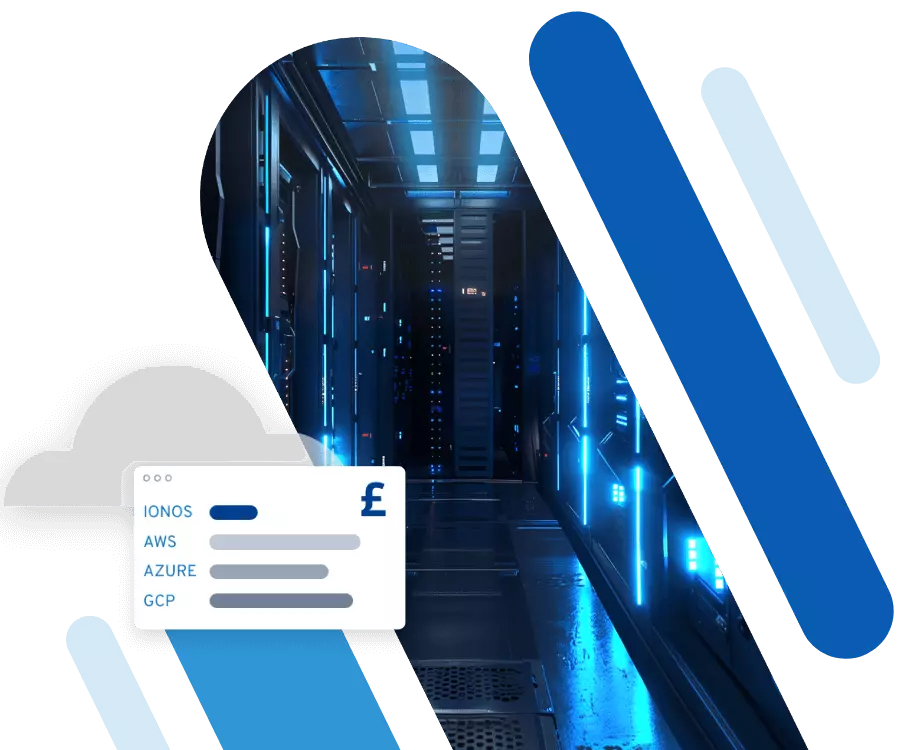How to back up data
From professional documents to private records and photos – our digital lives are increasing the data that on our computers and smartphones. Because many of these files only exist in a digital format, we want to be sure to avoid their loss. Regular data backups should therefore form part of our daily tasks. Read on to find out more about the individual options of methods and storage media.
- Regular virus scans
- Automatic backups and simple file recovery
How to back up data: the essentials
Before the actual data backup, always ask yourself which data needs to be backed up. After all, backing up data is time-intensive and can be costly, depending on the storage medium. For example, it’s a good idea not to back up data that could be easily restored by downloading it again (e.g. software). For individual documents (photos, emails, contracts, and other text documents) you could avoid multiple versions of the same document by storing only the current version.
Another important consideration when saving data is whether the backup should be manual or automatic. Manual backups are only worthwhile if you want to back up very specific documents. With an automatic backup, you can use appropriate software to specify which documents and folders are backed up, when and how often, and to which folders. Redundancies and versioning may be taken into account here. For example, you can specify whether data that has already been backed up should be stored separately again, replaced, or omitted.
In most cases, setup is intuitive and user-friendly for even inexperienced users to easily perform an automatic backup. Dive deeper into how to perform an automatic backup on Windows 10 or using the backup function on Mac with our dedicated tutorials.
Online or offline? The right place for a data backup
Storage media are typically offline or online.
- Online or cloud storage can be set up quickly and inexpensively. Users don’t need extensive technical know-how and storage space is easy to scale.
- Other external storage, i.e. media such as hard disks, network storage, or magnetic tapes, are independent of the Internet and have the advantage that the data is your responsibility at all times.
In comparison, optical storage media such as CDs, DVDs, Blu-Rays, or BD-R HTL (high to low) disks are expensive, offer less storage space and are not as durable. Since hard disk storage in the terabyte range has become affordable, optical media is used less frequently.
Prefer to collaborate on files that are stored securely online and won’t be lost? Then you might be interested in learning more about IONOS HiDrive Cloud Storage.
Backing up data in the cloud
Nowadays, backing up data to the cloud is a cost-effective and convenient solution. Once set up, all documents, photos, and other files are stored directly on a server. You determine the frequency and type of data to be stored. Cloud storage can be useful for backing up data from your computer, but also tablets, smartphones and other digital devices. The sign-up process is simple and just requires an email address.
One problem with data storage in the cloud is data protection. Your data is backed up to the servers of an external provider, hence the security of your data depends on them.
IONOS offers MyDefender, a cloud solution for private individuals that is as convenient as it is secure. Companies benefit from optimal protection of the complete infrastructure with Cloud Backup – all encrypted, ISO-certified, and data protection-compliant.
Saving data to an external hard disk
The external hard drive is a classic storage medium for backups. Available in almost any size and price range, simply connect the hard drive to your computer via a USB port. Depending on the size of your data, a simple USB stick serves the same purpose.
Important when backing up data to the hard disk
Much like computers or other technical devices, an external hard drive has a certain life expectancy. For heavy usage of an external hard drive, you can expect a maximum life span of 10 years. It’s a good idea to create a backup copy in good time and replace the hard drive every few years. Life span tends to be a bit longer if your storage device is used less frequently. Always store the hard drive in a dry and cool place, avoiding vibrations, bumps, and the influence of magnetic fields. Stored this way, your external hard drive could last several decades.
Backing up data to network storage
The somewhat more expensive, but more fail-safe alternative to a single hard disk is a network-attached storage (NAS): a kind of mini-computer that has at least one or more hard disks. If you integrate the NAS into your home or office network, an identical data backup is regularly created on several hard disks – if one hard disk fails, there’ll be at least one other backup available. Advantage(s) of backing up data to a network storage device over a hard drive include not only the higher resilience (thanks to multiple copies), but often also faster write speed and larger capacities. Furthermore, many network storages offer additional features, such as music and video streaming or emailing via a web server.
Save data on magnetic tapes
It may sound antiquated, but magnetic tapes are still a relevant storage medium, especially for companies. The magnetic tapes, which usually come in cassette form, have almost unrivalled storage capacities and are considered extremely durable, which is why they are useful for storing large amounts of data and long-term archiving. However, to make sure that the data backups are preserved long term, the cassettes must be stored away from magnetic fields, in a dry and dust-free environment.
Since the creation of the backup takes a relatively long time (slow writing speed) and a special recording device (tape drive) is needed, magnetic tapes are usually only worthwhile for companies that already have these devices and tapes. A new acquisition should be carefully considered due to the relatively small market and the high costs involved.
How to find the right medium for data storage?
The options at hand for backing up data are diverse and differ primarily in terms of backup speed, cost, and capacity. For private use, the cloud, external hard drives, and USB sticks are the most common. Small and medium-sized businesses can (additionally) consider network storage but also magnetic tapes.
To make the right choice, consider the following questions:
- What infrastructure is already in place? If you already have an external hard disk or your company still has magnetic tapes, there isn’t much of an argument against using this technology (additionally).
- How much data needs to be backed up? Depending on your storage needs, you will also need to choose a correspondingly large storage offering. A scalable cloud solution is great for large volumes of data.
- For how many devices/users should data backups be created? Especially for home users, the number of devices plays a major role. Low-cost cloud solutions usually have a limit on the number of end devices.
- How high do the security standards have to be? Corporate data should always be encrypted and backed up in line with data protection requirements. Geo redundancy – mirroring to storage in different locations – should also be considered when choosing a solution.
- What is your budget? Prices will vary widely from one solution to another. For in-house hardware solutions, you can usually expect higher acquisition costs, while cloud offerings generate recurring costs.
Tips: how can I properly secure my data?
This brings us to the final and very important topic of how to back up data properly and securely. Take the following tips to heart when backing up your data:
- Follow the 3-2-1 backup rule: Store three copies, in two locations, one of which is off-site.
- Always reduce the data you’re backing up to the essentials. Sort out versioning and duplicate data sets before backing up, as well as programs and documents that you can always download again from another source.
- Use write-once media or store read-only copies of documents so that when you back up again, you don’t accidentally overwrite content.
- Avoid storing data in “exotic” formats. Since formats change over time or because you may lose access to a program to open certain file formats, always store your data in standard formats. This includes formats such as PDF, JPG, MPEG, UDF, etc.
- If you store your data encrypted, keep in mind that passwords are also stored long-term.
- Decide on a unique name (including date) for your backups to find them quickly later down the line.
- After completing a backup, check that all files have been backed up correctly and in full.
- If necessary, regularly check the functionality of the storage media and replace them if necessary.
By the way: a multi-plate system like RAID (Redundant Array of Independent Disk) – i.e. a network of several hard disks in one device, is only suitable for backing up data to a limited extent. Even if the failure of a hard disk is intercepted, data loss can be imminent if, for example, faulty data is already stored, a virus spreads to one or more hard disks, or if there are software problems.
- Automatic backup and easy recovery
- Intuitive scheduling and management
- AI-based threat protection

